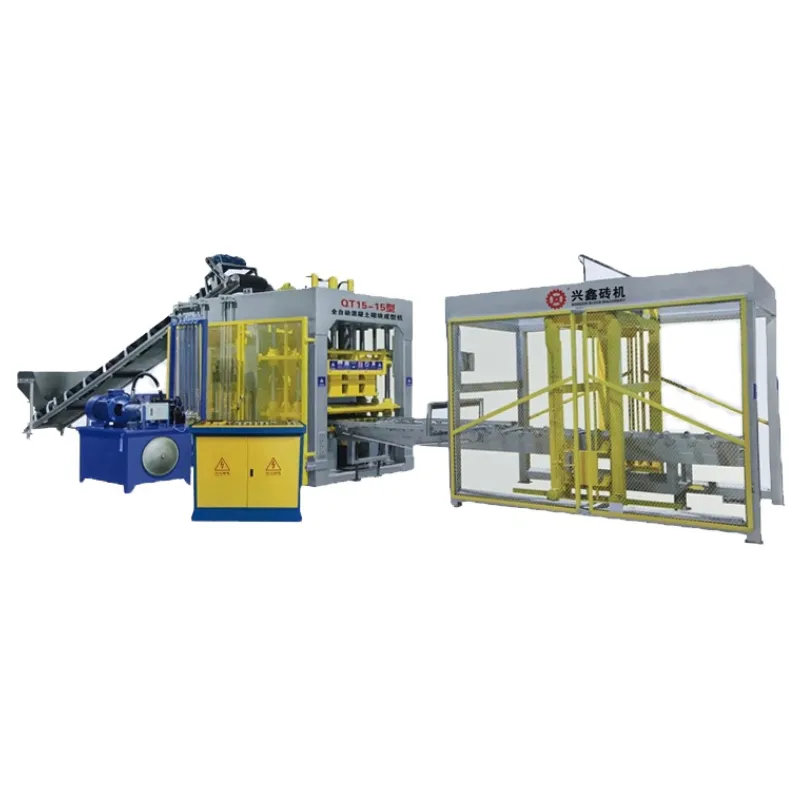How to Clean Mold Off Cinder Block Walls in Basement?
July 13, 2025
There is no denying that basements are really susceptible to mold especially on cinder block walls. The walls are made up of a lot of little pores, which make them absorb the moisture easily and create a perfect habitat for mold growth. While mold remediation techniques are vital, the source of the problem typically stems from the block quality and its production technique.
At KBL Machinery, we are convinced that a sustainable mold prevention method starts by implementing the right production process. By using our innovative Vibration Type-Brick/Block Making Machine, it is now very possible for the concrete blocks to be of a higher density, thus offering reduced water absorption and a longer lifespan of the wall.
It is not only the health risks that have humans concerned, but mold also slowly chips away at the structure, and after some time, there is no more integrity in a structure. It is the cause of such problems like staining surfaces, releasing spores into the air, and even promoting wall rot if not caught early. A good number of homeowners often employ scouring, and then they seal the areas with the problem; still, nothing can beat the answer at the source—the cinder block making machines that make the right materials.

What Causes Mold in Basement Walls?
Mold growth on cinder block walls is a result of one core factor: trapped moisture. This moisture can enter through groundwater leaks, humid air, poor insulation, or structural defects. If the concrete blocks used are low in density or contain air pockets, they retain moisture more easily, increasing the risk of mold.
That’s where Kimberly Machinery plays a preventive role. By offering modern cinder block making machines equipped with vibration and compression systems, we enable manufacturers to create blocks with minimized porosity and better resistance to moisture infiltration.
Step-by-Step: How to Clean Mold Off Cinder Blocks
- Step 1: Inspect and Isolate
Identify mold growth and block off the area to contain spores. - Step 2: Wear Protective Gear
Mold removal requires gloves, masks, and goggles to protect against inhalation or skin contact. - Step 3: Scrub the Surface
Use warm water and detergent with a stiff brush to remove surface mold. - Step 4: Disinfect Thoroughly
Apply diluted bleach or a commercial mold killer and let it sit for 10–15 minutes. - Step 5: Rinse and Dry
Rinse with clean water and use a fan or dehumidifier to ensure no moisture remains. - Step 6: Seal the Surface
Apply a masonry sealer to prevent future moisture intrusion and mold growth.
How Production Technology Prevents Mold from the Start
Rather than continually cleaning mold, it’s smarter to build with blocks that resist it in the first place. That’s where Vibration Type-Brick/Block Making Machine technology comes in. These machines compress and vibrate the concrete mixture under high force, creating dense, water-resistant blocks with smooth surfaces and minimal air pockets.
Kimberly Machinery, through KBL Machinery, specializes in automated cinder block making machines that deliver:
- Uniform compaction for structural strength
- Reduced internal voids, minimizing water retention
- Customizable mold configurations for different block sizes and shapes
- Integration with waterproofing additives during production
These advantages allow construction projects—especially those involving below-grade walls—to last longer with less maintenance.
Why Choose Kimberly Machinery?
Kimberly Machinery has developed a reputation for producing equipment that meets the real-world needs of builders and manufacturers. Our Vibration Type-Brick/Block Making Machine is used in multiple regions facing high humidity and frequent mold-related challenges, including Southeast Asia, the Middle East, and South America.
Clients who use our cinder block making machines report fewer post-construction issues, higher customer satisfaction, and long-term cost savings. Whether you run a small block factory or manage a large production line, our machines scale with your growth and quality goals.
Build Smarter to Avoid Future Mold Issues
Ultimately, while you can scrub mold off a basement wall, the real solution is to start with better blocks. Mold prevention begins with how blocks are made—and Kimberly Machinery has the tools to do it right. With our high-performance cinder block making machines and proven Vibration Type-Brick/Block Making Machine models, we help you manufacture materials that are built to last and resist the very problems many homeowners dread.


